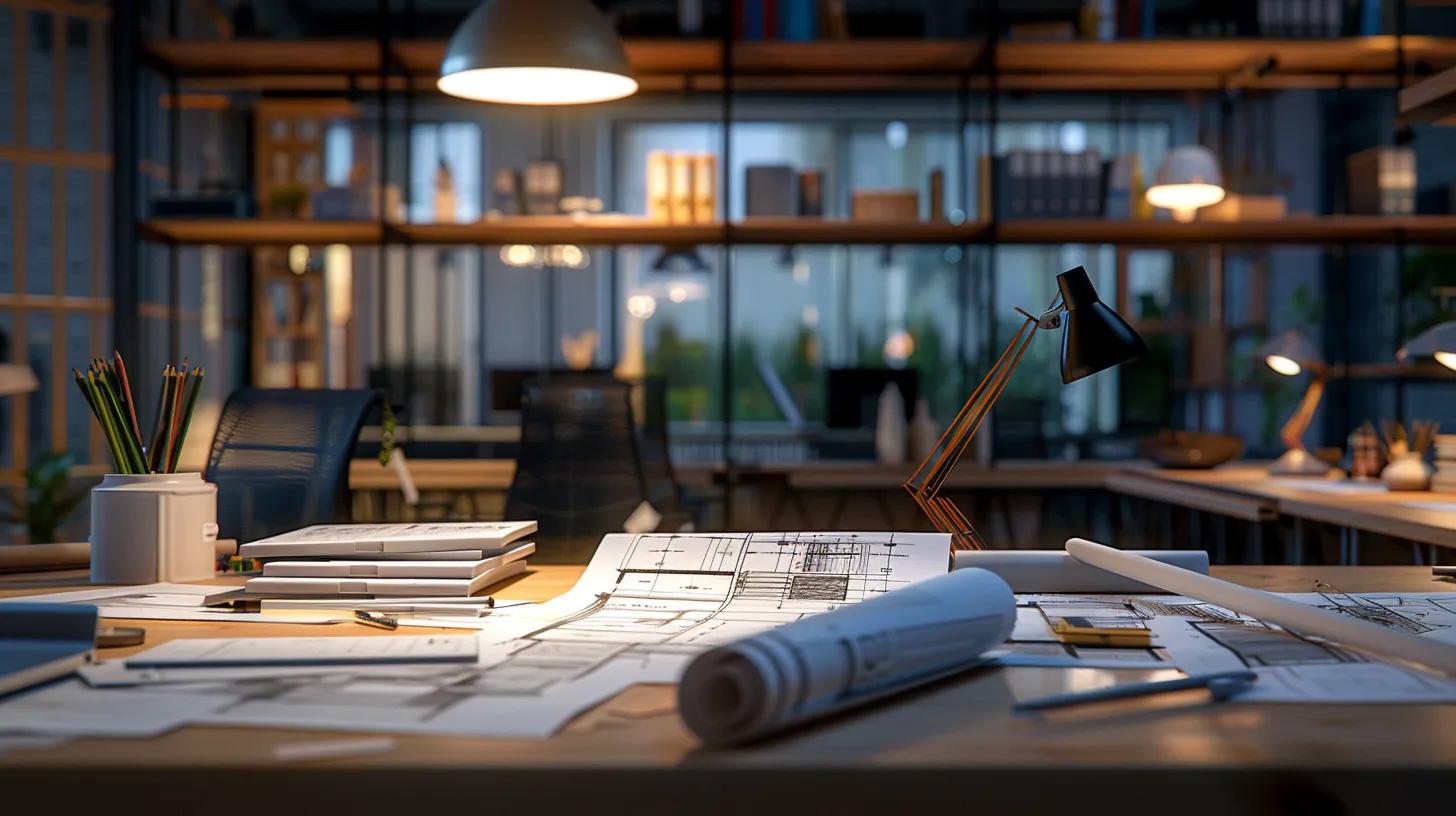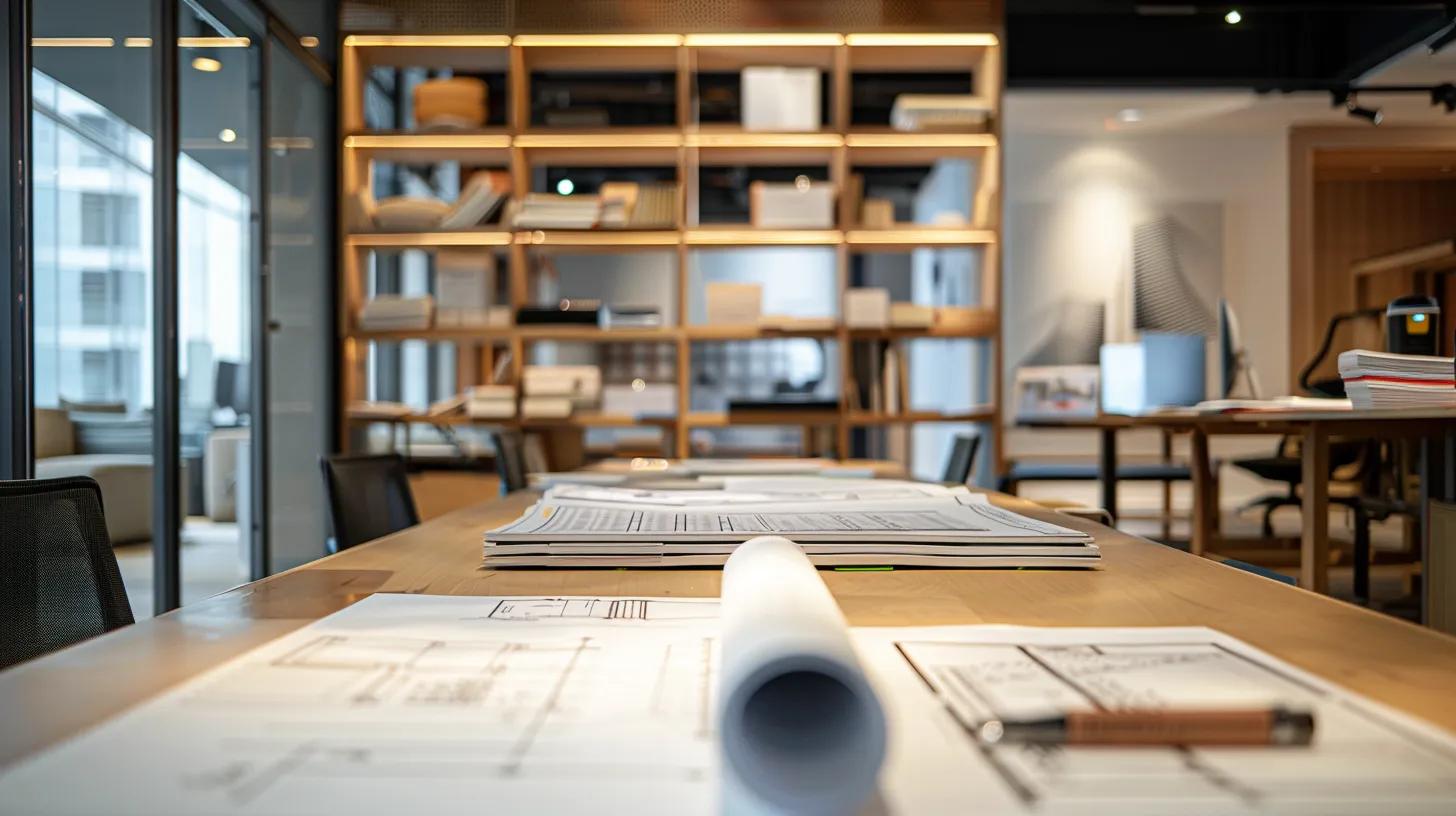
Creative Custom House Plans for Your Next Renovation
When it comes to home renovations, the blueprint is just as important as the final finish. A well-thought-out plan not only brings your vision to life but also ensures that every structural detail and design choice works in harmony. For homeowners, custom house plans are essential—they reflect your unique goals, accommodate your home’s specific layout, and support both functionality and style.
In this article, we’ll explore why personalized plans are crucial for renovation success, how they help tackle common challenges, and the wide-ranging benefits they offer—from reducing costs and preventing delays to enhancing safety and resale value. We’ll also share tips on how to create effective custom plans and how to choose the right professional to guide the process
Key Takeaways
Custom house plans provide a blueprint that meets both aesthetic and functional renovation needs.
They integrate existing structures with modern design elements.
Clear communication between homeowners and contractors minimizes delays and overruns.
Sustainable and smart features are easily incorporated for energy savings and improved comfort.
What Are Custom House Plans for Renovations and Why Are They Essential?

Custom house plans are personalized blueprints developed to address a homeowner’s specific remodeling needs. They transform stock designs into solutions that reflect a home's unique character—from a new patio to an expanded laundry room. By considering architectural style, building codes, and personal preferences, these plans integrate elements such as basement remodels or modern duplex layouts with precise dimensions. This clarity helps homeowners communicate their vision effectively to architects and contractors while reducing delays and ensuring code compliance.
How Do Custom Plans Differ From Standard House Plans?
Unlike one-size-fits-all standard plans, custom plans are fully tailored. They incorporate unique architectural features, flexible roof designs, and niche spaces such as a pantry or barndominium concept. Standard plans may overlook details like an energy star-rated shower or specialized interior design elements. Custom plans detail every component—from the layout of a kitchen sink to supporting walls for a porch—ensuring the blueprint fits local building codes and the homeowner’s lifestyle.
What Renovation Challenges Do Custom Plans Address?
Custom plans tackle problems presented by aging structures and irregular layouts. They help integrate existing elements such as an old basement or oddly placed laundry room with new upgrades. For a cape cod-style house, these plans address limited space and steep roof angles, optimizing wall placements and improving daylight flow. They also suggest structural modifications for outdated features like showers or cramped pantries, ensuring the final design meets modern standards.
How Do Custom Plans Improve Communication Between Homeowners and Contractors?
By serving as a clear roadmap, custom plans help both homeowners and contractors understand every detail of the renovation. They visually outline measures—from the dimensions of remodeled attics to the placement of extended porches—minimizing errors and reducing disputes. Annotated blueprints simplify coordination with professionals, ensuring that timelines and budgets are met.
How to Create Tailored House Plans That Fit Your Renovation Goals?

Creating tailored house plans begins with gathering essential details about the project vision and requirements. Whether it’s remodeling a basement, adding a wall, or upgrading features like a roof or sink, a comprehensive site survey and measurement process lays the foundation for a blueprint that is both functional and stylish.
What Information Is Needed to Develop a Custom Renovation Plan?
A successful custom plan compiles detailed information: site dimensions, structural limitations, and specific design goals. Homeowners should provide accurate measurements of critical areas (patio, laundry room, interior spaces), note building code restrictions, and share inspirations from various architectural styles like cape cod or modern duplex designs. This data helps create designs that integrate energy-efficient windows and precise wall layouts.
How Are Existing Structures Incorporated Into New Plans?
Existing structures are incorporated by assessing the current building’s condition and overlaying proposed modifications using tools like CAD and 3D modeling. Whether adding a porch, redesigning a pantry, or reconfiguring a remodel, this method ensures changes respect the original design while achieving modern functionality and aesthetics.
What Role Do 3D Models and Blueprints Play in Custom Plans?
3D models and detailed blueprints provide a realistic preview of the proposed renovation. They allow homeowners to visualize updated spaces—such as kitchens with energy star appliances or living rooms with improved daylight—and help contractors understand precise modifications needed in walls, roofs, or fixtures. This dual approach improves planning, communication, and overall project alignment.
What Are the Key Benefits of Using Custom House Plans for Renovations?

Custom house plans enhance efficiency, safety, and overall design quality. Detailed plans reduce surprises and unexpected expenses, help meet building codes, and optimize features like sustainable materials and energy star components. They ensure every facet—from an open-concept basement to a well-positioned porch—is purposefully designed, reducing costs and streamlining the renovation process.
How Do Custom Plans Help Save Time and Reduce Renovation Costs?
By eliminating trial-and-error in construction, custom plans allow contractors to work faster with pre-approved dimensions and placements. Early identification of potential obstacles reduces costly revisions and delays. For example, a well-marked plan for a basement remodel prevents wasted labor and materials, ultimately lowering overall renovation costs.
In What Ways Do Custom Plans Ensure Code Compliance and Structural Safety?
Developed in collaboration with knowledgeable architects, custom plans incorporate load-bearing walls, proper insulation, and compliant construction methods. Detailed specifications for materials and finishes ensure that remodeled features like porches or duplex areas meet local building codes, reducing risks and ensuring long-term durability.
How Do Custom Plans Enhance Aesthetic and Functional Outcomes?
Custom plans balance practicality with visual appeal. They harmonize design elements—like integrating a modern kitchen sink with a traditional interior—while introducing innovative features such as smart home systems. This approach results in renovations that are both functional and beautiful, preserving the unique character of the home.
How to Choose the Right Custom House Plan Service for Your Renovation?
Homeowners should select service providers with proven expertise in renovation-focused design. Look for professionals who have experience handling complex projects like basement remodels or integrating old structures with modern upgrades. Reviews, portfolios, and certifications are key indicators of quality, along with transparent customer service and cost structures.
What Expertise Should Renovation-Focused Designers Have?
Designers should be proficient in both modern and traditional styles and be well-versed in building codes and energy-efficient practices. Their ability to reconfigure spaces like laundry rooms and integrate sustainable features is crucial for a structurally sound, visually appealing renovation.
How to Evaluate Portfolio and Customer Reviews?
Review past projects, blueprints, and 3D models to assess the provider's design quality and versatility. Customer feedback can reveal strengths in reliability, communication, and problem-solving, ensuring the designer can successfully handle unexpected challenges.
What Additional Services Support Successful Renovations?
Additional services such as project management, cost estimation, and sustainable design consultations provide added value. Some providers also integrate smart home technology and follow-up inspections to ensure quality, making the renovation process smoother from start to finish.
What Are Common Mistakes to Avoid When Using Custom House Plans for Renovations?

Common pitfalls include using incomplete plans, failing to update designs during the project, and poor communication with contractors. Overlooking details can lead to misinterpretations, delays, and increased costs. Consistent planning and regular updates are essential to prevent these issues.
How Can Incomplete or Inaccurate Plans Cause Renovation Delays?
Incomplete plans may result in errors such as incorrect wall measurements or lack of proper daylight considerations. These oversights force last-minute changes, disrupt timelines, and inflate budgets.
Why Is Early Contractor Involvement Important in Plan Development?
Involving contractors early ensures that practical feedback on materials, structural needs, and installation techniques is integrated from the start. This early input helps streamline the design process and minimizes costly revisions later.
How to Ensure Plans Are Updated Throughout the Renovation Process?
Regular meetings and digital version control keep everyone on the same page. Continuous reviews and updates avoid miscommunications and ensure that any necessary changes are documented and implemented promptly.
How to Integrate Sustainable and Modern Features Into Custom Renovation Plans?

Modern renovations benefit from integrating eco-friendly materials and smart home technologies. Improved natural lighting, efficient layouts, and advanced insulation methods can be built into custom plans, reducing energy consumption and utility bills while enhancing indoor comfort.
What Sustainable Materials and Designs Are Recommended?
Materials such as reclaimed wood, recycled metal, and low-VOC paints are ideal for sustainable designs. Features like energy star-rated windows and green roofing not only reduce the environmental footprint but also add long-term value by lowering operating costs.
How Can Smart Home Technology Be Included in Custom Plans?
Plan dedicated spaces for automation hubs and sensors. Integrating smart lighting, HVAC systems, and centralized control panels in areas like the kitchen or living room ensures the renovation meets modern standards of convenience and energy management.
What Are the Benefits of Energy-Efficient Renovation Plans?
Energy-efficient plans lead to cost savings by lowering energy consumption. They create stable indoor environments and may qualify for incentives, adding financial benefits while promoting sustainable living.
How to Prepare for the Renovation Project Using Your Custom House Plans?

Successful renovations require clear post-planning steps. Coordination with contractors, securing permits, and setting a detailed timeline—from demolition to final touches—are vital to keeping projects on track and stress-free.
What Steps Follow After Finalizing Custom Plans?
Once plans are finalized, homeowners should secure permits, finalize budgets, and set up meetings with contractors. Obtaining updated cost estimates and establishing communication channels ensure a smooth transition from design to implementation.
How to Use Plans to Coordinate With Contractors and Suppliers?
The finalized blueprints serve as a comprehensive guide. They provide precise dimensions, material specifications, and installation protocols. Regular meetings and progress reviews help address any changes quickly and keep every aspect of the renovation on schedule.
What Should Homeowners Expect During the Renovation Process?
Homeowners can expect a structured process with regular updates and on-site reviews. Proactive communication and defined milestones keep the project on track, minimizing disruptions and controlling costs.
Frequently Asked Questions
Why are custom house plans better than standard plans?
Custom house plans cater to each home’s unique requirements, ensuring every detail is tailored to the project.
Can I incorporate sustainable features into my custom plan?
Yes, custom plans integrate eco-friendly materials, energy-efficient designs, and smart home technology to reduce utility costs.
How does early contractor involvement affect renovations?
Early involvement ensures practical insights are included in the design, reducing errors and improving adherence to building codes.
What information should I provide when creating a custom renovation plan?
Provide accurate site measurements, design preferences, structural limitations, and any specific functional needs.
How are updates to custom plans communicated during renovations?
Regular meetings and digital blueprint versioning keep all parties aligned and informed of updates.
Final Thoughts
Custom house plans are indispensable for successful renovations. They align design with function by addressing energy efficiency, code compliance, and aesthetics. Thorough planning and clear communication lead to coordinated projects, reduced costs, and beautifully remodeled spaces that stand the test of time.


